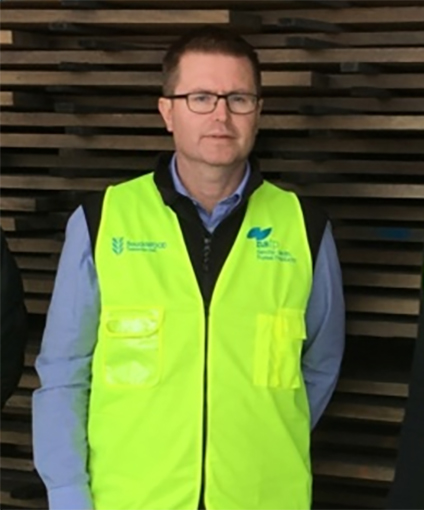Indigenous Tasmanians managed the forests right for 60,000 years, now our state forests are left to become tinderboxes under a struggling Parks and Wildlife department, wrote Andrew Walker in The Mercury newspaper.
The time has come to have a mature debate about the future wellbeing of Tasmanian forests, and I am not just talking about their use as a timber resource.
Let’s put aside for a moment legal and fully certified production forests and focus on those in world heritage areas, national parks and forest reserves.
These forests are in danger of being loved to death through a lack of management and resultant exposure to the ravages of catastrophic bushfire.
For 60,000 years, Tasmania’s forests were effectively managed through regular burns by the First Tasmanians.
Indigenous Tasmanians understood the importance of reducing the forest understorey by cool temperature burning.
This was as much an intuitive science as it was a method of hunting. It protected towering native trees from uncontrolled fire. It ensured native seedlings, brought to life by the heat of fire, found their way through the burnt underbrush to the nurturing sun light.
Today, the vast majority of our protected forests are left to fend for themselves despite the growing danger and potency of catastrophic fire.
After hundreds of years, much of our reserves is overgrown with dense understorey that sits like a tinderbox at the base of our forest giants waiting to ignite destruction and disaster.
In many instances, these were production forests with a network of roads providing critical access for protective management and bushfire control.
Not so today.
Gone are the armies of experienced bush workers and their equipment, people who knew the bush like the back of their hands.
Their livelihoods depended on it, and they were as committed to protecting our forests as they were for the security of their employment and wellbeing of their families.
Today, a dedicated but resourced-limited Parks and Wildlife Service struggles to achieve the bare minimum in ensuring management of these so-called protected forests.
The triumvirate of fire services — Tasmania Fire Service, Department of Primary Industries, Parks, Water and Environment, and Sustainable Timber Tasmania — who share responsibility for the state’s public forests are similarly under resourced in both people and equipment.
Each year, the situation worsens and the level of mitigation burning to reduce the dangerous forest understorey is of minimal benefit.
Are we prepared to sensibly debate the protection of our wonderful forest estate on the basis of science, contemporary and Indigenous, or continue to allow judgment to be dominated by baseless emotion and erroneous claim?
If we succumb to the latter, we must reconcile ourselves to an inevitable catastrophe, potentially as devastating as that which burned through south eastern Australia last summer. That destroyed 18.6 million hectares of mostly forest, razed 2779 family homes and killed at least 34 people. The tragic loss of wildlife is immeasurable.
Any mature debate about forestry must also include commercial forestry.
Opponents claim the forest industry lacks a social licence. That is not true.
A recent poll shows 50% of Tasmanians openly support the industry, while a mere 7% are openly opposed.
Admittedly, there is a large body of people who remain undecided, understandable given past history.
It also underlines the need for a mature debate based on science and reality rather than emotive claims and allegations.
The industry stands ready for this discussion. We want to talk about the benefits of forestry in meeting the challenges of climate change.
The Intergovernmental Panel on Climate Change articulates native forest harvesting as an activity that mitigates the effects of climate change.
We want to talk about forestry as a truly sustainable resource, the ultimate renewable, and ensure we, as a nation, are not importing native timbers from poorer countries with lower levels of forest regulation, often leading to deforestation.
Prevention of catastrophic fire must be on the agenda, along with economic impact of the industry in regional areas and the love Australians have for native timber, used in myriad internal decorative applications.
Despite a number of meritorious uses and applications, plantation timber is simply not a viable short, medium or long term substitute for native timber.
That discussion should be conducted in the context that 52% of Tasmania’s forests are protected by law in reserves of one kind or another, never to be touched.
By comparison, only 17% of the public forest estate is available for harvesting on a rotational, sustainable basis.
Wherever harvesting in fully certified public forests does take place, all parties involved, including Sustainable Timber Tasmania, are subject to the rigorous scrutiny of the independent umpire, the Forest Practices Authority.
So, let’s look beyond false claims of destruction and devastation and instead talk about sustainable forest regeneration based on science, stringent management controls, climate change, reducing imported timber volumes and the imperative of protecting downstream jobs in Tasmanian regional communities.
Andrew Walker is the chief executive of Neville Smith Forest Products.






